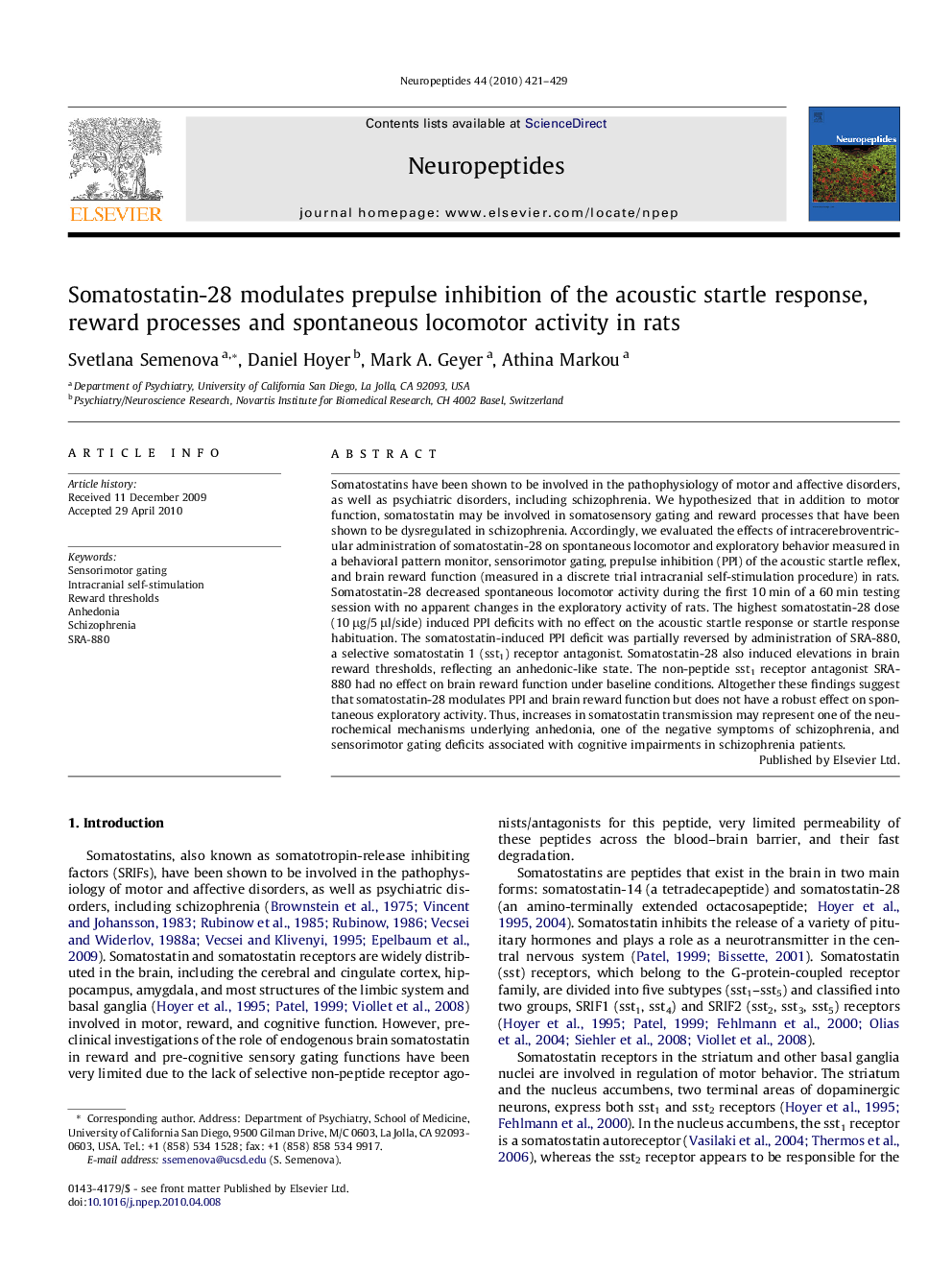| Article ID | Journal | Published Year | Pages | File Type |
|---|---|---|---|---|
| 2808210 | Neuropeptides | 2010 | 9 Pages |
Somatostatins have been shown to be involved in the pathophysiology of motor and affective disorders, as well as psychiatric disorders, including schizophrenia. We hypothesized that in addition to motor function, somatostatin may be involved in somatosensory gating and reward processes that have been shown to be dysregulated in schizophrenia. Accordingly, we evaluated the effects of intracerebroventricular administration of somatostatin-28 on spontaneous locomotor and exploratory behavior measured in a behavioral pattern monitor, sensorimotor gating, prepulse inhibition (PPI) of the acoustic startle reflex, and brain reward function (measured in a discrete trial intracranial self-stimulation procedure) in rats. Somatostatin-28 decreased spontaneous locomotor activity during the first 10 min of a 60 min testing session with no apparent changes in the exploratory activity of rats. The highest somatostatin-28 dose (10 μg/5 μl/side) induced PPI deficits with no effect on the acoustic startle response or startle response habituation. The somatostatin-induced PPI deficit was partially reversed by administration of SRA-880, a selective somatostatin 1 (sst1) receptor antagonist. Somatostatin-28 also induced elevations in brain reward thresholds, reflecting an anhedonic-like state. The non-peptide sst1 receptor antagonist SRA-880 had no effect on brain reward function under baseline conditions. Altogether these findings suggest that somatostatin-28 modulates PPI and brain reward function but does not have a robust effect on spontaneous exploratory activity. Thus, increases in somatostatin transmission may represent one of the neurochemical mechanisms underlying anhedonia, one of the negative symptoms of schizophrenia, and sensorimotor gating deficits associated with cognitive impairments in schizophrenia patients.
